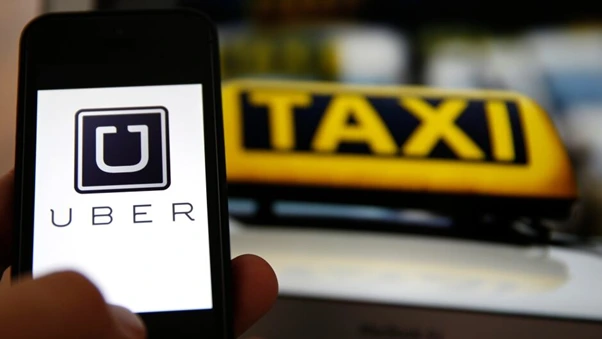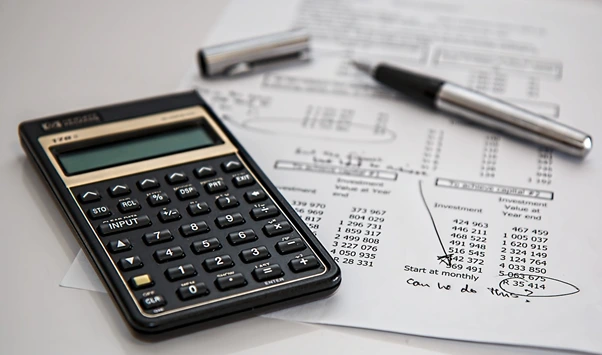
Let’s discuss taxes, which may seem dull, but they can drastically boost your income. You are basically running your own business, whether you are a professional Lyft driver, an Uber driver, or an ordinary cab driver. Additionally, you must keep track of your spending and take advantage of those cash deductions, just like any savvy business owner.
Don’t worry, though; I’m not here to confuse you with figures. To help you save more of your hard-earned money, we’ll walk you through this process step-by-step with examples from real life. Does that sound good? Come on, let’s go!
Why Tracking Expenses is Essential

To begin with, why even bother keeping track of your spending? Think it this way: every mile you travel, every snack you enjoy in, and every phone charger you purchase could count for a tax profit. You’re losing money if you don’t keep track of things. Who would want that? Instead of giving Uncle Sam that money, how about treating yourself to a great dinner!
Imagine that in order to stay awake while traveling late at night, you pull over for coffee. That coffee for $5? Deductible! Only if you hold onto that receipt. Thus, be careful to store it in a designated location. Just of the savings that would result from all of those late-night coffee trips!
Step-by-Step Guide to Tracking Expenses

Step 1: Get Your Stuff Together
Find a place to store all of your financial documents. It could be a folder in your car or a folder on your computer. It doesn’t have to be anything fancy, just a place where you can find everything. Trust me, it will save you plenty of headaches down the road! No one wants to search for that one receipt like it is a game of hide-and-seek right before tax day!
Step 2: Use an Expense Tracking App
Now, let’s talk tech! Say goodbye to crumpled receipts and messy spreadsheets. There are cool apps out there, like QuickBooks or Expensify, that can make tracking your expenses super easy. For example, you take a pic of your receipt with QuickBooks, and boom! it’s logged. For example, if you fill-up the tank for $40, just take a picture, and you’re done! It’s almost like magic; you can keep driving, not drowning in paperwork.
Step 3: Keep Every Receipt
Try to save all your receipts, no matter how small. Trust me on that! Those little purchases add up way faster than you think. For example, you buy a $5 coffee during a long shift. It feels tiny, right? But if you do that every day and add up all those snacks and drinks at the end of the year, it could be a nice little chunk of money!
So, how does one keep track? Throw a dedicated envelope in your glove compartment, or better yet, use some fun scanning app on the phone to digitize as you go. When tax season rolls around, you will be ready to rock with all of your receipts organized.
Step 4: Log Your Miles Like a Boss
Don’t forget about your miles! Every mile you drive for business is deductible, and those miles can add up. For example, if you drove 1,000 miles for work and the IRS rate is 67 cents per mile, that’s a whopping $560 you can write off! Apps like MileIQ or Stride will even automatically track the miles for you. Just drive and let the app do the work. Easy peasy!
Step 5: Categorize Your Expenses
OK, so what counts as an expense? It most likely counts if you’re paying money to maintain your car or to carry out your work faster. Let’s explore it:
Mileage: This is your bread and butter. Log every business mile. Imagine you drove 50 miles on a Saturday night? That’s $32.75 in deductions.
Oil and Gas Alternations: Save those receipts. For example, did you spend $40 filling up your tank? If you’re using the Actual Expenses method, that’s an exemption.
Maintenance: Repairs, new tires, car washes, all deductible. For instance, did you spend $150 on an oil change and tire rotation? Boom, business expense!
Tolls and Parking: It’s deductible if it’s work-related. Let’s say you paid $10 in tolls on a busy shift. Don’t forget to log it.
Step 6: Choose Your Deduction Strategy
You can claim your car expenses in two ways:
Standard Mileage Rate: Clean, clear, and easy to keep track of. Let’s say, you drove 20,000 miles last year. That’s $13,100 in deductions.
Actual Expenses: Total all of your car expenses (gas, repairs, insurance, etc) and deduct the business use percentage. For example, if your car costs $ 10,000 a year and 80 % of your driving is for work, you can deduct $ 8,000.
Step 7: Review Your Records Regularly
You know what’s a good idea? Take some time every week or month to go over your expenses. Seriously, it doesn’t take long, and it’s such a helpful habit! Just think: if you catch any mistakes early enough, you can straighten them out before they snowball.
So, if you find out you’re spending a lot more on coffee than you thought, you can change your habits and probably cut back a little. It’s really about having a clear view of your finances and being in control; that’s such a nice feeling, right? Plus, it makes budgeting so much less stressful! So, what do you say? Do you want to make this a habit?
To discover more essential about Parent tax, read Tax Basics for Parents: Understanding Child Support, Child Care, and Child Tax Credits
Final Thought
Since you’re already putting in a lot of effort, why not make your money do the same? You may save a lot of money on taxes by tracking your spending and understanding what you can deduct. Making the most of the money you’ve worked so hard to earn is more important than simply avoiding a large tax payment.
Simply record an expense or register your miles the next time you’re waiting for a ping. Now get out there and drive, and save wisely!
To discover more essential about tax, read American Tax Savvy: Maximize Your Refund, Deduct Your Bill
Frequently Asked Questions(FAQ)
1. What can I deduct as a taxi or Uber driver?
– Great query! Mileage, gas, auto maintenance, tolls, parking, and even your phone bill can all be deducted if you use it for work. Basically, everything that helps you get your work counts!
2. Without going crazy, how can I keep track of my miles?
– Don’t worry! Use apps that track your mileage automatically, such as Stride or QuickBooks Self-Employed. If you’ve got an eye for customs, simply write them down on your phone or in a notepad. Maintaining consistency is absolutely essential!
3. Is it better to deduct actual expenses or the mileage rate?
– It’s up to you! The mileage rate is really simple and typically works well if you drive frequently. However, the actual expenses method may save you more if you have notable auto expenses (such as insurance or repairs). See which one results in a larger deduction by trying both!